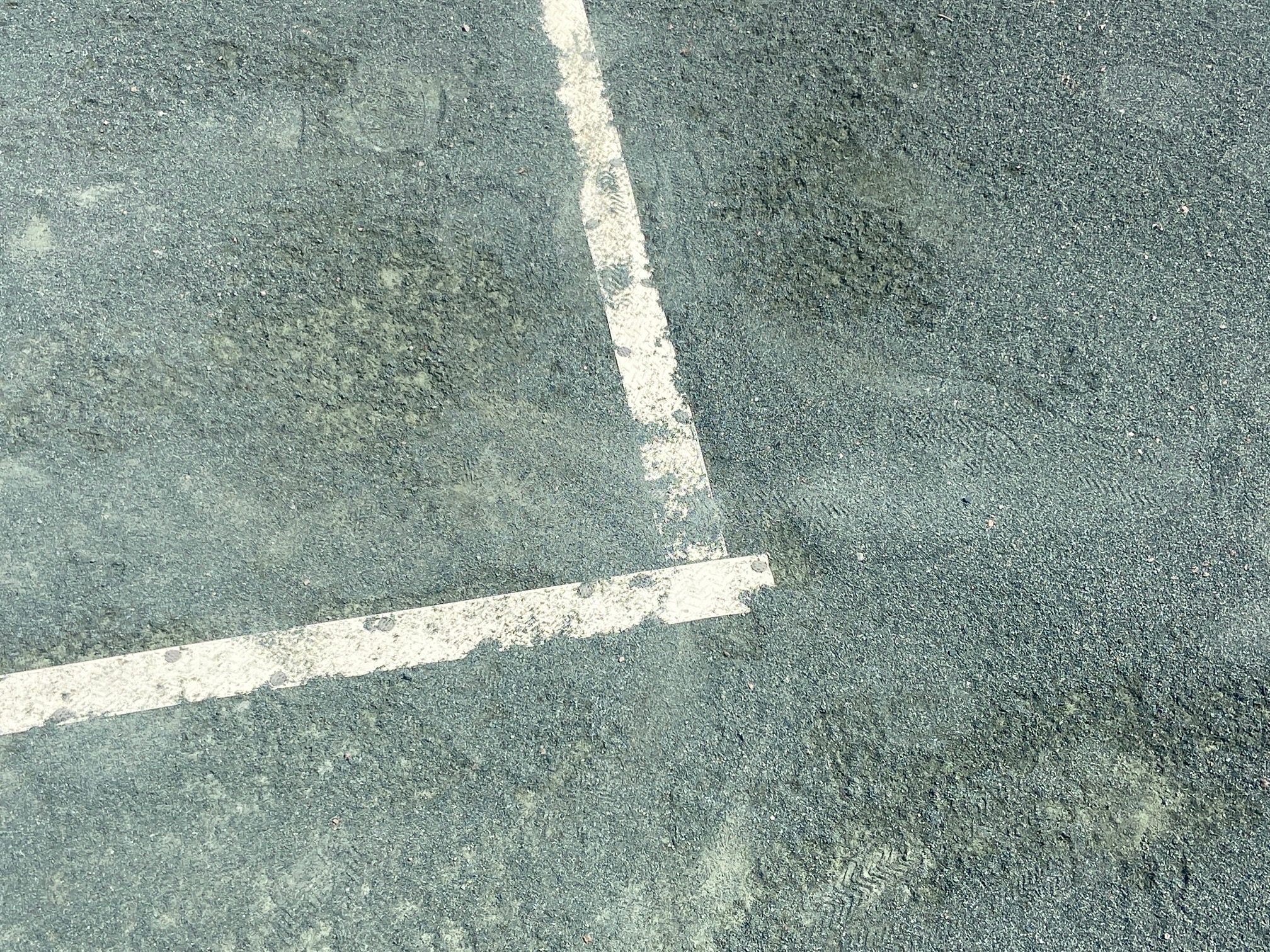Today’s saga is a tennis experience that has finally graduated off the “cool down” section of my future posts list. It has been almost six years since these events occurred, which recently led me to the realization that I will never fully understand everything that transpired and the subsequent aftermath.
Like most good stories, this one starts with a terrible decision. For reasons that escape me to this day, I agreed to captain a 5.0 USTA local league in an area where play at that level had not occurred for many years. It was a two-team league and a classic example of all the negative social dynamics described in “The Terrible Twos.” That season was also challenged by excessive rainouts. In fact, seven of nine scheduled league dates were not played as scheduled due to the weather.
One of our late-season matches was to be played on an afternoon that had scattered storms in the forecast. Early that morning, the other captain started texting me with requests and nudges to declare the day a rainout because she ostensibly didn’t want her team to drive to our home courts only to watch it rain.
Unless there had been a hurricane moving up through central Texas, I wouldn’t ever agree to that. Rescheduling league rain-outs is a terrible burden on captains who must be intermediaries between each match to simulate a blind roster exchange. Additionally, I had my strongest lineup available that day, and I took the ask for a deferral as evidence that the other team did not. It was evident by that point that the league championship would go down to the wire.
As the weather forecasted, a thin line of storms rolled through the DFW area a couple of hours before our scheduled match time. Behind that storm front was a bright sunny day and beautiful weather. I told my players to be on-site early to squeegee the courts and told the other captain to let her team know that the courts would be dry.
I arrived at our site an hour and fifteen minutes before our scheduled match time, ready to squeegee like a demon. I asked the pro shop manager about our court assignment, but she refused to give it to me. She also declared that no one would be permitted onto the courts until the lightning detector cleared. The lightning detector in that tennis center is visible from the pro shop.
I do not doubt that the lightning detector was probably triggered when the line of storms came through. However, it was not activated at that moment. The default configuration for their model is to blow a horn when it is activated and then periodically flash a light until 30 minutes have passed without any further detections. The “all clear” signal is three additional blasts from the horn, and the strobe light stops. In this case, the strobe wasn’t flashing.
This left me in an impossible predicament. My team would not be allowed to squeegee the courts until the lightning detector cleared, but it was never going to clear because it wasn’t activated. That logic was lost on the pro shop manager. What ensued was a long discussion accompanied by me showing her the descriptions of how the detectors work per the Parks and Rec department over that facility as well as the manufacturer’s manual. She was never swayed.
Finally, long after my team had all filed into the pro shop, she conceded that it had been well over 30 minutes since I first walked through the door. With her concurrence, we went out to the courts with only a few minutes to dry the puddles before the other team rolled in. It was too late.
The other team arrived, looked at the puddles, declared that the courts wouldn’t be playable anytime soon, and departed. By showing up, it also confirmed my suspicion that they didn’t have their strongest lineup available. My team hung out for a while longer until it was apparent that the courts indeed became playable about 15 minutes after our scheduled match time. It was maddening.
Unfortunately, that is not where this saga ends. The pro shop manager complained to her Parks and Rec facility manager that my team had blatantly ignored her prohibition on going out to the courts and, in the process, had put ourselves in danger. I received a scathing email from him indicating that if there was any further incident, he might not allow us to continue using that facility. My response to him corrected the factual errors in what the pro-shop manager reported to him. I never received a satisfactory response to that message.
At that point, I already had another team scheduled to play at that facility in another local league. Those courts were paid for, and the schedule had already been published, so it was too late to find an alternate venue. That following season, I saw endless complaints from the pro shop manager about my team funneled through the facility manager back to me.
Most were without merit like someone from my team hitting off the backboard after being asked to stop when no one on my team had used the backboard at all. We were accused of entering the courts “too early” to warm up for our matches. I was also accused of unacceptable on-court behavior on a weekend when I was out of town. Fun times.
We got through that season. I resolved to never play out of that facility again. I suspect my application for any further court time would have been denied anyway. League play takes me to that tennis center occasionally, and I think the pro shop manager is no longer working there. The facility manager has moved on as well. However, my resolve to never run a team out of that site remains intact.
To this day, I don’t understand the intense, sustained animosity that arose from that situation. In hindsight, I definitely underestimated how fiercely that particular person would dig in when confronted with her obvious error. It was disheartening how what should have been so minor spiraled into something so exhausting.
Perhaps the most disappointing aspect was how it undermined my will to continue captaining teams. There are enough challenges already without layering in the complete breakdown of common sense and subsequent ridiculous finger-pointing and accusations. Sometimes, no amount of reasoning or good intentions can resolve a conflict rooted in stubbornness rather than logic.
The lesson I arguably should have learned from this episode is how to pick my battles better. However, this is not a story with an ending that tidy. Instead, it’s a reminder of how certain conflicts leave lasting impressions, not because they were resolved well but because they weren’t resolved at all. Sometimes, you don’t get closure, just experience.
Maybe this is the real lesson: Let the storm pass and move on.



